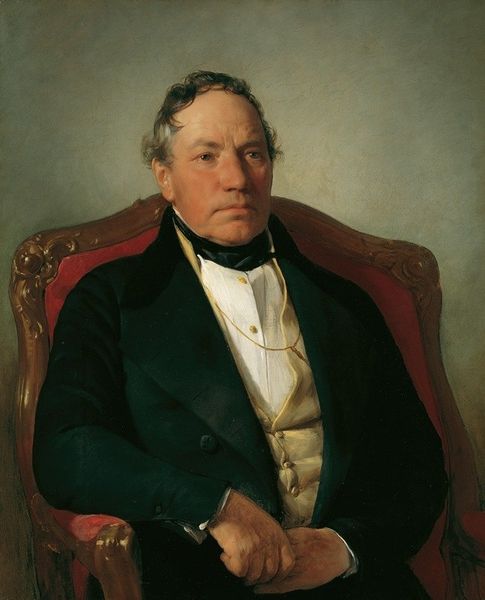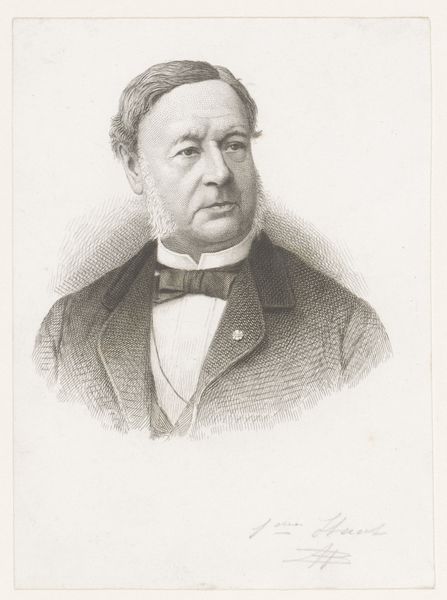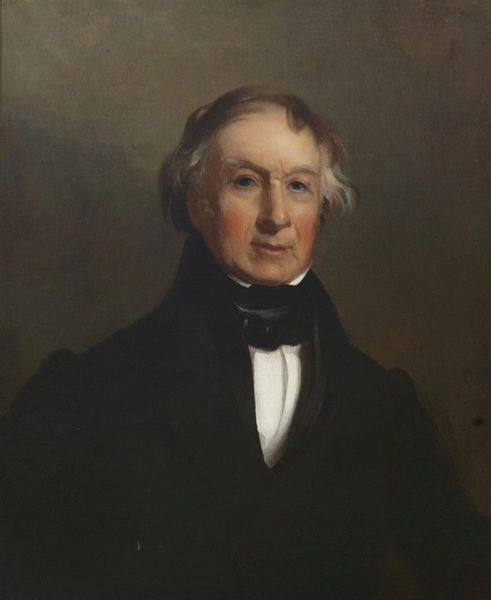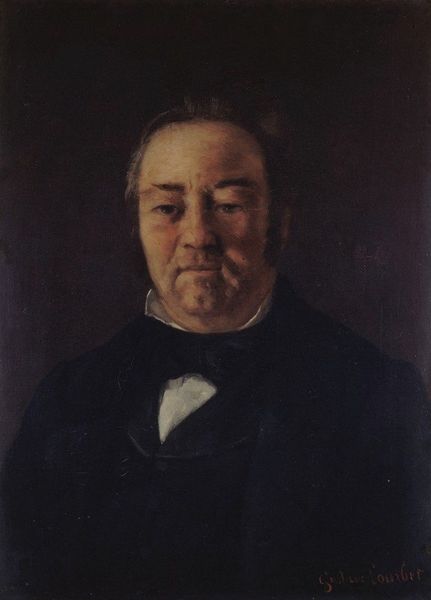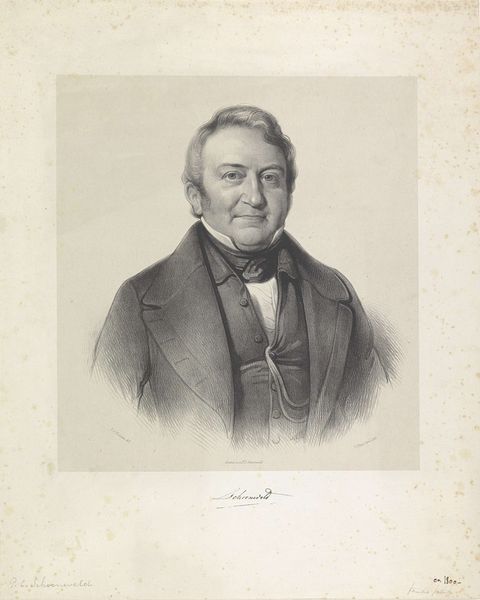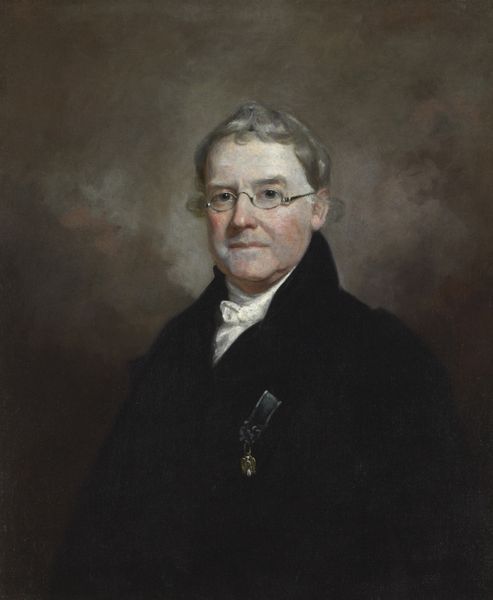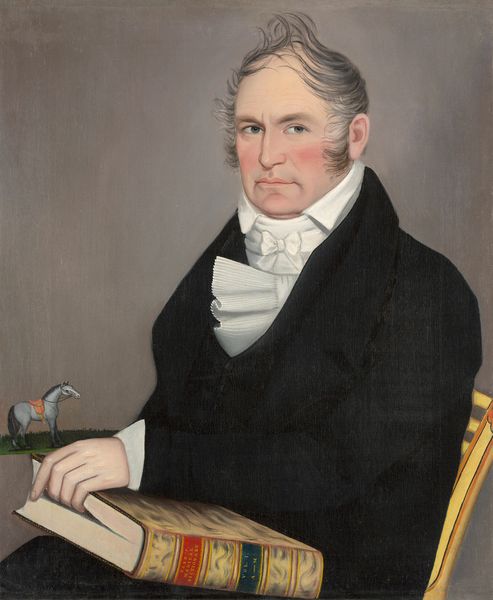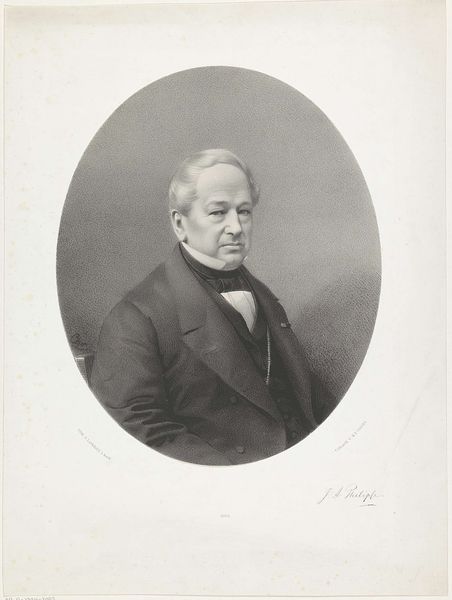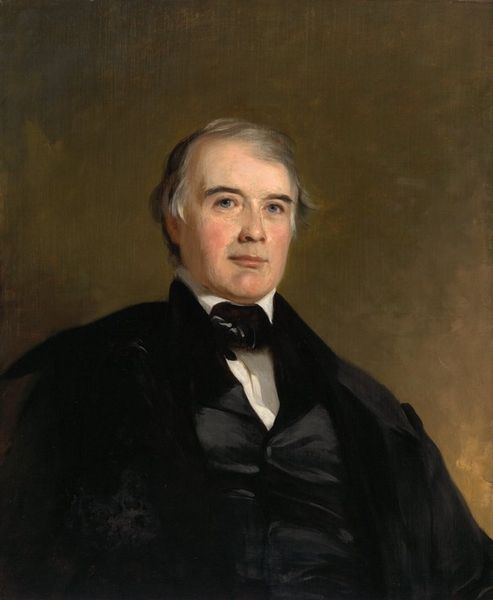
painting, oil-paint
#
portrait
#
portrait image
#
painting
#
oil-paint
#
portrait drawing
#
genre-painting
#
academic-art
#
portrait art
#
fine art portrait
#
realism
#
celebrity portrait
Dimensions: height 66.7 cm, width 52.3 cm, thickness 3.1 cm, height 75.3 cm, width 60.9 cm, depth 10 cm
Copyright: Rijks Museum: Open Domain
Curator: Here we have Johannes Ephraim's "Portrait of Pieter Hendrik van Gelder," created in 1887 using oil paint. It exemplifies the style of academic realism that was quite prominent during that era. Editor: It has an almost unsettling stillness to it. The gentleman's eyes, rendered in meticulous detail, seem to stare right through you. Curator: Absolutely. The formal attire, the black suit, waistcoat, and bow tie, position van Gelder within a particular societal context. This was a time defined by rigid class structures and expectations. The portrait tells us as much about the subject himself as it does about the prevailing social values. Editor: Focusing on the oil paint application, it is clear the artist wanted to simulate a feeling of fine quality cloth of the jacket, as opposed to calling attention to the materiality of the art object. Everything recedes into representing upper-class gentility, but if one digs deeper we might be able to deconstruct how class is reinforced in these kinds of artifacts. Curator: That is where things get tricky. Considering the portrait as a whole and not just isolated details, how much can we critique his complicity in an unjust system versus acknowledging his personhood within a different framework of power? Is his portrait an active endorsement or passive reflection of the social hierarchies of his time? I’d even go as far as to wonder how his access to certain commodities and privilege relates to the current discourse around accessibility today. Editor: Exactly. Consider the artist's labor itself, the hours of painstaking work dedicated to producing this image of wealthy upper-class standing. The fine details of the jacket represent a sort of alienated labor - how does that tie into value judgments? What sort of economy can support artists that work for individuals to signal status? Curator: The historical value in observing such works today resides in their capacity to open up conversations regarding the ongoing tensions between labor and capital. With the portraiture on display, the dynamics between power and the individuals whose identities were shaped within that structure come into view. Editor: It is these questions that bring these works from the past back to the present, allowing us to explore how these ideas, like art's relationship to power structures, continues to evolve and be discussed in the present moment.
Comments
No comments
Be the first to comment and join the conversation on the ultimate creative platform.
